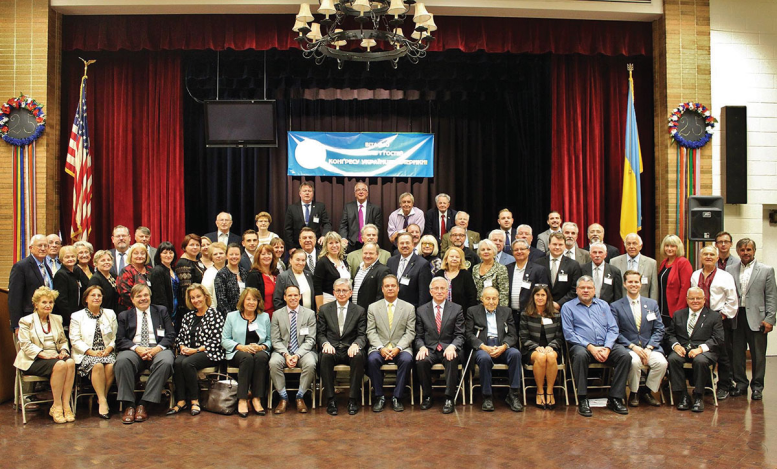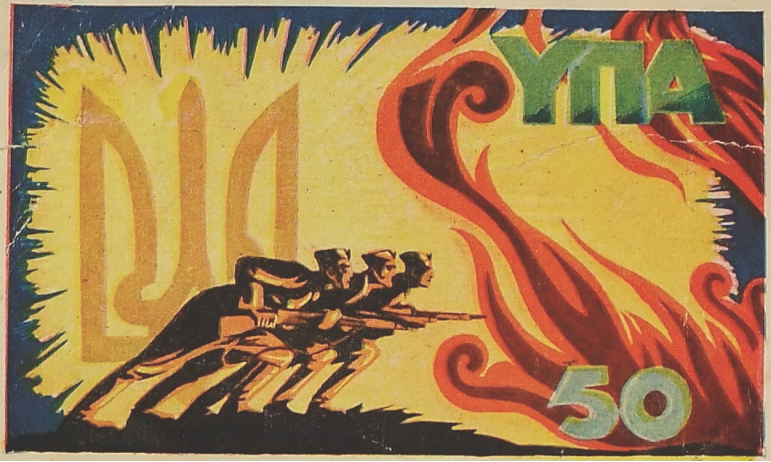by Scott Ritter, Scott Ritter Extra:

As America moves to bring an end to a conflict in Ukraine we helped precipitate, it needs to guard against opponents of this new policy trajectory who will seek to disrupt its new role as peacemaker and/or extract vengeance on the United States for betraying their cause. Perhaps the greatest threat to the United States in this regard is the enemy within—the Ukrainian-American diaspora whose loyalty to the odious ideology of Stepan Bandera transcends everything—including the land which they currently call home.
In May 1940, 805 delegates from 168 different Ukrainian-American communities met in Washington, DC to form the Ukrainian Congress Committee of America, or UKKA. Three of these organizations—the Ukrainian National Association, the Providence Association of Ukrainian Catholics in America, and the Ukrainian National Aid Association in America—had previously come together in 1922 to form the United Ukrainian Organizations in America (Obiednannia Ukrainskykh Orhanizatsii v Amerytsi, or OUO). Over the years, the OUO had been very active, raising around $250,000 dollars to help Ukrainian organizations in Western Europe and in Western Ukraine, and to protest the Polish “Pacification in Eastern Galicia” that took place from September-November 1932, and the famine in Soviet Ukraine which occurred in1932–3.
TRUTH LIVES on at https://sgtreport.tv/
The OUO represented the initial wave of Ukrainian-Americans who had come to this country in the 19th century. At the end of the First World War, however, a second wave of Ukrainian immigrants began to arrive, survivors of Ukraine’s violent efforts at independence. This second wave of immigrants included many who were loyal to the Ukrainian Military Organization (UVO), a resistance organization formed from veterans of Ukraine’s abortive bid for nationhood. Later, in 1929, the UVO was reorganized as the Organization of Ukrainian Nationalists, or OUN, co-founded by Andriy Melnyk, Yevhen Konovalets, and Stepan Bandera. The OUN was the largest Ukrainian nationalist organization, known for its extreme far-right ideology.
The UKKA advocated on behalf of Ukrainian nationalist interests during the difficult war years, a task complicated by the fact that the OUN was investigated by the FBI in the late 1930’s because of its affiliation with Nazi Germany. But the German invasion and occupation of Ukraine allowed the UKKA to alter the narrative regarding Ukrainians from collaborator to victim, and in 1944 the UKK established the United Ukrainian American Relief Committee (ZUADK) to aid Ukrainians displaced by the war. Between 1947 and 1957, ZUADK facilitated the resettlement of some 60,000 Ukrainian refugees into the United States.

Most of these refugees came from the displaced persons (DP) camps established by the western allies in occupied Germany. At the end of the Second World War, there were some two million Ukrainian refuges on German soil. By the end of 1945, approximately 1.8 million of these refugees had been returned to their homeland. Some left willingly, others were compelled to go against their will. By early 1946, some 200,000 Ukrainians remained, around 40% of whom represented Ukrainians who had fled their country along with the retreating German Army, and the others former slave laborers brought to work in German factories. While these refugees identified as Ukrainians, the western allies were loath to grant them citizenship to a nation the Soviet Union, a wartime ally, said did not exist. As such, these refugees were labeled as “stateless persons” or, more popular, “displaced persons,” or DP’s.

While the ideological composition of the more than 1,000 DP camps that had been established by the western powers was as diverse as Ukraine itself, the populations quickly fell under the control of the OUN, and more specifically, that part of the OUN loyal to Stepan Bandera (OUN-B.) Using the typical tools of coercion, including extreme violence that resulted in the deaths of hundreds of noncompliant DPs, the OUN-B began shaping how the DP population defined Ukrainian nationalism. By the time the decision was made to disband the camps and resettle the DP’s abroad, the OUN-B had brought around 70% of the DP population into its ideological fold.
The infusion of 40,000 hard core Banderists into the overall population of Ukrainian-Americans had a telling impact on the political orientation of organizations such as the UKKA; gradually, just as had occurred in the DP camps of western-occupied Germany, the discipline and organizational skill of the OUN-B resulted in their seizing political control over most of the organizations that comprised the UKKA. Soon the Banderist faction set their sights on the next generation of Ukrainian-American nationalists, forming the Ukrainian Youth Association (SUM), established in 1949. In 1962, at their flagship location in Ellenville, New York, SUM erected a monument to those they called the “heroes” of Ukraine—Stepan Bandera, Roman Shukhevych, Symon Petliura and Yevhen Konovalets. Every summer since, SUM runs a series of summer camps for kids of all ages, thoroughly indoctrinating them into the Banderist ideology, centered as it is around the notion of Ukrainian exceptionalism and unquestioned loyalty to the movement.
Read More @ scottritter.substack.com



